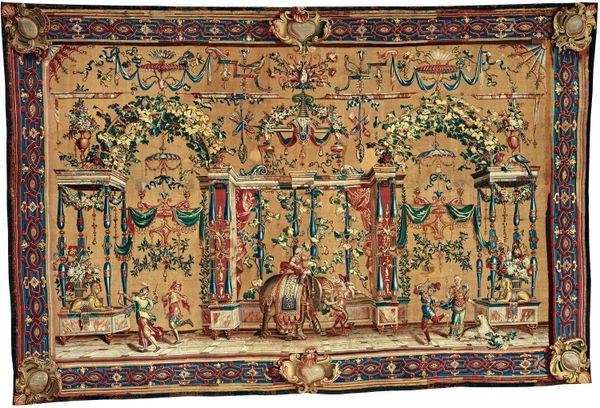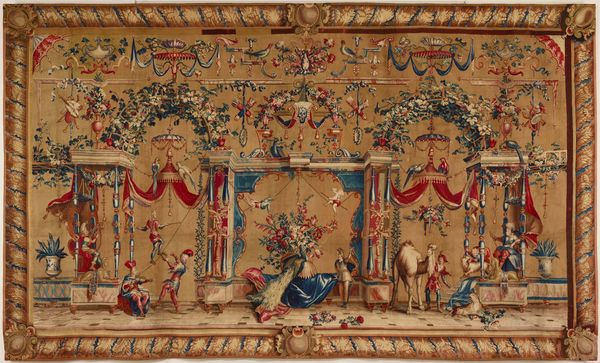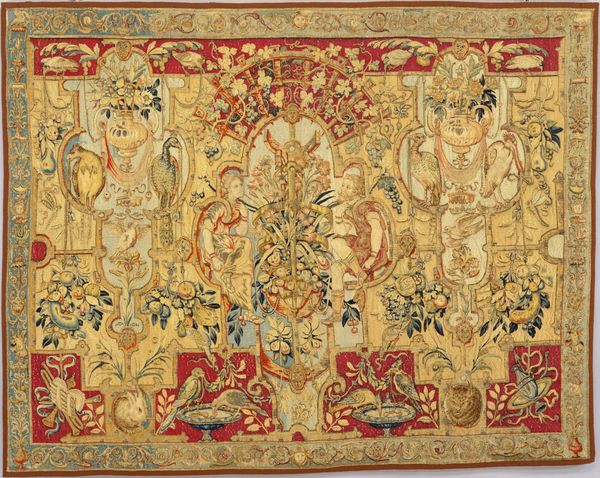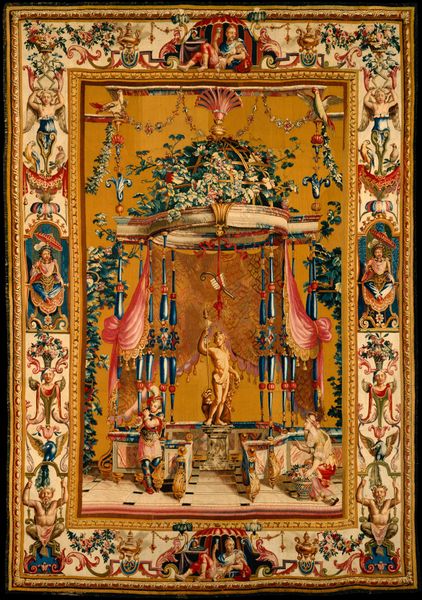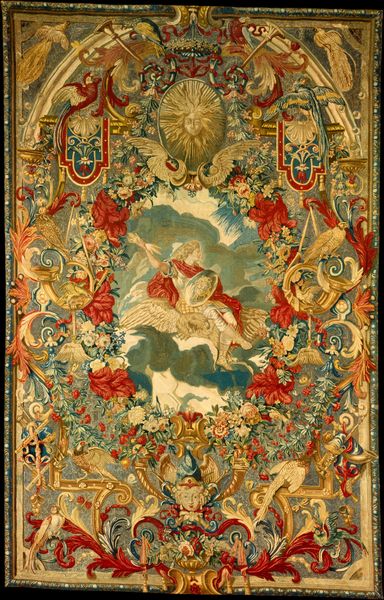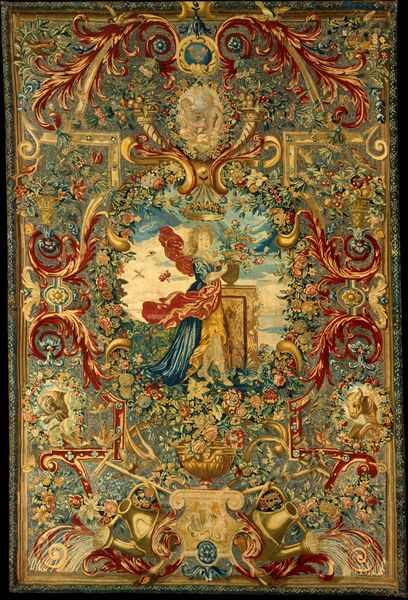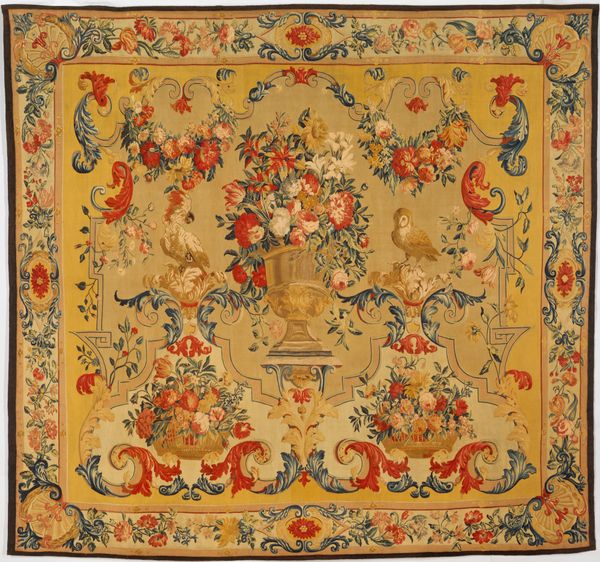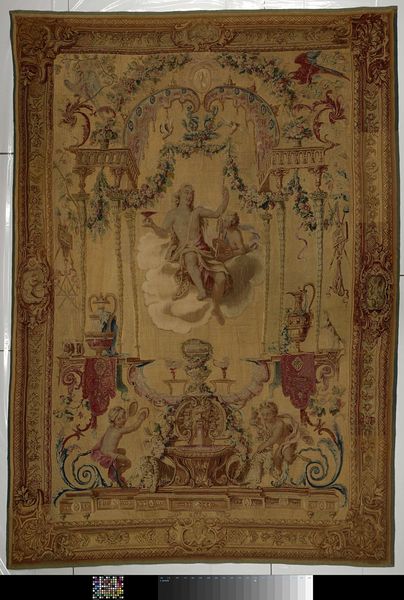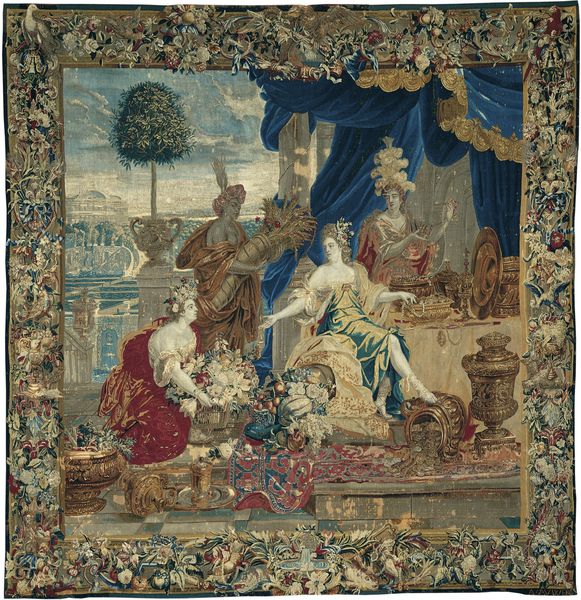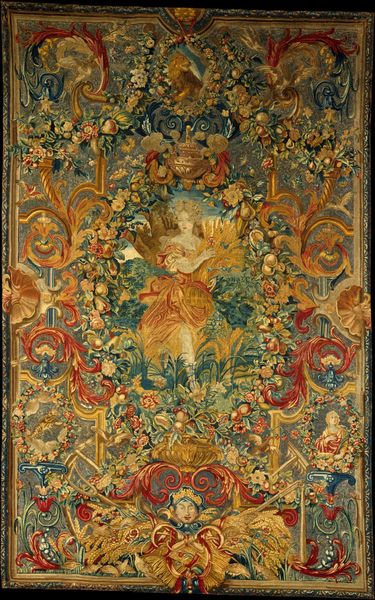
The Elephant from a set of five Grotesques 1683 - 1716
0:00
0:00
textile, sculpture
#
portrait
#
baroque
#
landscape
#
bird
#
textile
#
animal print
#
figuration
#
text
#
sculpture
#
men
#
genre-painting
#
decorative-art
#
motif
Dimensions: Overall (confirmed): 116 x 181 in. (294.6 x 459.7 cm)
Copyright: Public Domain
Curator: This tapestry, "The Elephant from a set of five Grotesques," was created sometime between 1683 and 1716. It now resides here at the Metropolitan Museum. What are your initial thoughts? Editor: Well, I am immediately struck by its overall gilded appearance and intricate detail. There's a dynamic arrangement of elements that's almost overwhelming, yet unified by a shared sense of Baroque opulence. Curator: Precisely! This textile exemplifies the decorative arts flourishing at the time. Note the artist's rendering—most likely Jean-Baptiste Monnoyer—showing human figures alongside exotic fauna like that central elephant. Tapestries such as these weren't merely decorations; they signaled wealth, taste, and access to global trade routes that delivered rare materials. The social standing embedded in each thread is almost palpable. Editor: Indeed. The structure leads my eye across and then back on itself—rhythmically chaotic. Looking at how the threads interplay gives an indication of this being an extremely valuable luxury item, it’s the details— the execution and assembly—that speaks volumes here. Curator: I agree. Now, consider the labor. Each thread spun, dyed, and meticulously woven by skilled hands within manufactories serving royal patrons. "High" art relies on craft production, challenging our notions of creative authorship. Who designed it? Who produced it? And what was the journey of resources consumed in its creation? Editor: The tapestry displays complex symmetry as a foundational visual order that supports its ornamentation, from those little birds to the repeating decorative structures within the image. Looking at these compositional methods emphasizes the central image, giving it weight. Curator: Absolutely. And such methods show the era's social preoccupations, as tastes became signs of distinction. This one piece reveals the interweaving connections between workshops, colonial exploits, aesthetic ideals, and social displays of power. Editor: Ultimately, this work demonstrates the compelling relationship of detail and large structure. Curator: Well said. It underscores the need to connect what we see to the economic and social circumstances behind what enables it to even exist as a material artwork in front of us.
Comments
No comments
Be the first to comment and join the conversation on the ultimate creative platform.
